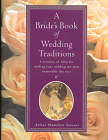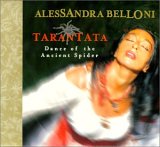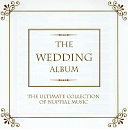
books
music
film & videos
gifts
travel
food & wine
genealogy
italian american
features
news
forums
free email
newsletter
link directory
|
new york
events, links, forum
boston
events, links, forum
new!philadelphia
events, links, forum
chicago
events, links, forum
san francisco
events, links, forum
los angeles
events, links, forum
|
|
about us
|
you can help us!
We're an all volunteer website and need your help to keep going. Here are five ways you can contribute:
1 Donate
2 Buy something
3 Submit a story
4 Volunteer
5 Advertise

get in gear!
New in the gift shop, virtualitalia.com logo wear and use items!

|
|
PLEASE NOTE: We are experiencing unexpected
technical difficulties caused by our web host. We apologize for
the inconvenience. During your visit you may experience service
and page interruptions - we are in the process of fixing everything and hope to be
fully back on our feet soon.

italian wedding customs & traditions

Here is a collection of various Italian wedding customs and traditions, to read about the Legalities of Marrying in Italy refer to our "Living & Working in Italy Guide.
This lengthy celebration may begin with a mass in the morning, and the dancing and feasting after the wedding ceremony may continue well into the early morning hours of the next day. An Italian wedding could last the entire day, night and next morning.
The Engagement
- Long ago, Italian marriages were arranged by the families of the bride and groom. Often, the brother or another male relative of the groom went to the father or uncle of the young woman to ask for her hand in marriage. In some cases, a matchmaker sent a message masciata to the prospective bride's family of the man's intent to marry the bride. Once the two families were in accord, the couple's official engagement was announced.
- If the groom proposes directly to the bride, he usually serenades her first, and either plays an instrument or shows up with his musically-talented friends.
- Diamond engagement rings were given by medieval Italians in the belief that the diamond was created by the flames of love. Precious stones were used by medieval Italians as part of the groom's payment for his bride.
The payment, like engagement rings today, symbolized the groom's intent to marry.
- In preparation for the wedding, the bride assembled a bundle (dote), consisting of household items, linens, her clothing, and sometimes even her future husband's clothes, to bring to the home of the groom. Her family provided her with a dowry consisting of monetary, and possibly domestic goods.
- Wearing of green by the bride the night before the wedding brings luck and abundance to the couple.
- Particularly in Southern Italy, it is uncommon for either the groom or the bride to have a "bachelor" or "bachelorette" party before the wedding.
The Wedding
- On the day of the wedding, the bride is not supposed to wear any gold, until after her wedding ring is slipped out. Wearing gold during or before the wedding is thought to bring bad luck.
- Old Church traditions forbade marriage during Lent and Advent. Marriage was also avoided in the months of May and August. May was to be reserved for the veneration of the Virgin Mary, and August was thought to invite bad luck and sickness.
- Sunday marriages (with the exception of the months mentioned above) are believed to be luckiest .
- In the Veneto region of Italy, the groom walks to the
bride's house and, together, he walks with the bride and the whole wedding
party to church. On the way , town residents would watch
the group walk by and present the bride with many challenges. For example, they put a broom on the ground and if she
bride noticed it and picked it up to put
it away she was considered a good housekeeper. Then, she might come across a crying child, the couple is supposed to quiet him and make him smile, this would mean that they will be good parents. Coming across a beggar, means giving generously and is equaled to having a good heart.
- The bride arrives to the wedding mass last. In the meantime, the groom waits in front of the church as his best men tease him about the bride, "Did you tell her that you're getting married today?" and "I don't think she'll come"! Her lateness, depending on the number of minutes, would have a different meaning to the groom.
- In Northern Italy, the groom brings the bouquet of flowers to the wedding. In fact the color and style of the bouquet is supposed to be a surprise to the bride. This signifies a present from the grooms family to the bride. While the groom waits for the bride outside the church, the groom should stand there... holding the bouquet.
- Folklore called for the groom to carry a piece of iron in his pocket (Toc Ferro) on his wedding day to ward off the evil eye (mal'occhio) since his happy situation might provoke envy, and invite supernatural danger.
- The bride wore a bridal veil to conceal her from malignant spirits, yet tearing the veil was considered good luck.
- In Southern regions of Italy, the couple shattered a vase or glass into many pieces at the end of the wedding day. The number of pieces represented the number of years they'd be happily married to one another.
- The candy-covered almonds, bomboniera (confetti) tied in mesh bags to toss at the couple is based on a tradition to avoid childlessness. In the past, instead of wedding cake, ornamental bags or boxes were filled with the sugared almonds and sent to friends and guests to signify the matrimony or the "union of bitter and sweet." The number of confetti was, and continues to be, very important;
it should be an odd number preferably 5 or 7-- each a good-luck number.
The Reception
- The best man greets everyone coming to the reception
with a tray of liquor. Sweet liquors are served to the women and strong drinks served to the men before any food.
The purpose
of this is to give everyone an opportunity to toast the bride and groom.
A common toast would be
"Per cent'anni" (for a hundred years).
- All the men at the reception kiss the bride for good luck -- and to make the groom jealous.
- The bride carried a satin bag (la borsa) in which guests placed envelopes containing money. The money helped toward the expenses of the wedding which was financed by the bride's family. During the reception, this purse was usually guarded by the bride�s grandmother (nonna) or mother (the holder of the bag can vary).In some weddings the bride
hangs on to the satin bag and all the men
who dance with the bride put money in the sack.
- At some weddings, primarily in Northern Italy, the best man would cuts the groom's tie into little pieces. The pieces
are then put onto a tray and sold to the guests. The proceeds are given to
the couple to help pay for the band. It's a good idea for the groom to bring a cheap tie in anticipation of this custom.
- Italian weddings have always emphasize food. Strongly linked with family life, food is the focal point of the festivities. The elaborate wedding of the bride and groom brings together the friends and relatives of both families in a celebration of their new relationship.
-
In ancient Rome, a loaf of wheat bread was broken over the heads of the bride
and groom to ensure a fertile and fulfilling life. Guests would eat the crumbs
for good luck.
- A multi-course dinner follows, often as many as 14 different courses (sometimes even more)!
- Symbolic foods for good luck include twists of fried dough, powdered with sugar, called bow ties wanda, and Italian wedding candy.
- After dinner, everyone is served slices of wedding cake with cups of coffee, espresso or other beverages.
- During the wedding receptions friends of the groom usually sneak away to play tricks on the new couple (i.e. walling-in the door of the couple's new home, putting itching powder in the bed).
- A band providing dance music for the wedding guests may play mazzurcas and tarantellas.
- Before the bride and groom retire for the night,
they brake a vase or a glass - the number of
pieces that the vase breaks into symbolizes the
number of happy years of marriage that the couple
can expect.
Italian Proverbs about Marriage
"Ne di Venere Ne di Marte non si sposa ne si parte!"
Neither marry nor depart on the day of Venus or of Mars!
"Sposa bagnata, sposa fortunata"
A wet bride is a lucky bride (referring to rain on the wedding day)
"La buona moglie fa il buon marito"
A good wife makes a good husband.
"La moglie e' la chiave di casa"
The wife is the key of the house.
"Tra moglie e marito ... non mettere il dito."
Don't put a finger between wife and husband.
"Moglie e buoi ...dei paesi tuoi."
Wife and bull ...from your home-town.
"La prima e' Matrimonio, la seconda comagnia, la terza un'eresia."
The first wife is marriage, the second company, the thrid heresy.
"Meglio il marito senz'amore, che con gelosia."
Better to have a husband without love than with jealousy.
"Chi ha moglie ha doglie"
Who has a wife has strife.
"Chi non ha moglie non ha padrone."
Who has no wife has no master.
"Casa senza fimmina �mpuvirisci"
(Sicillian proverb) A house without a woman is poor
"Matrimoni e viscuvati, di lu celu su mannati"
(Sicillian proverb) Weddings and bishops are heavensent
Italian Wedding Questions
Post your question in our Italian Customs & Traditions forum. Here is a sampling of the latest questions.
If you know of additional Italian wedding customs, traditions and proverbs, please send them to me via our feedback form, grazie!
|








